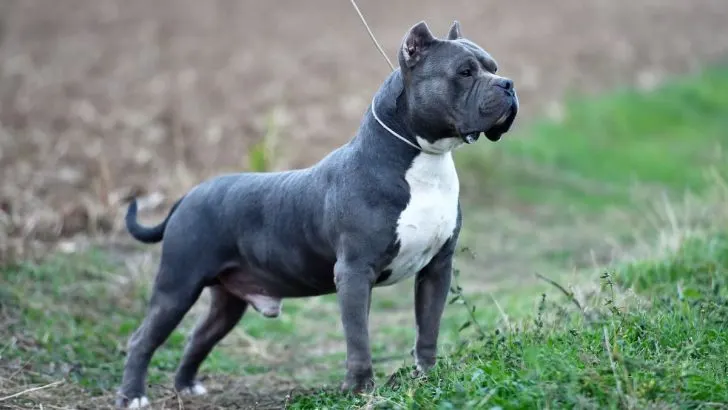Oh no, there’s hair everywhere! Why is my American Bully shedding so much?!
American Bully dogs are some of the most popular family pets out there. Known for their unique stature and short coats, it might seem like this loving breed is non-shedding.
As a result, many people are shocked once they find out that their beloved Pitbull-breed pooch actually sheds a significant amount, especially if this amount changes all of a sudden!
Why does this happen? Is there a way to control Pitbull shedding, or is excessive brushing and hair cleaning going to become your life now?
Here’s everything you need to know if you want to learn why is your American Bully shedding so much:
1. Breed Characteristics
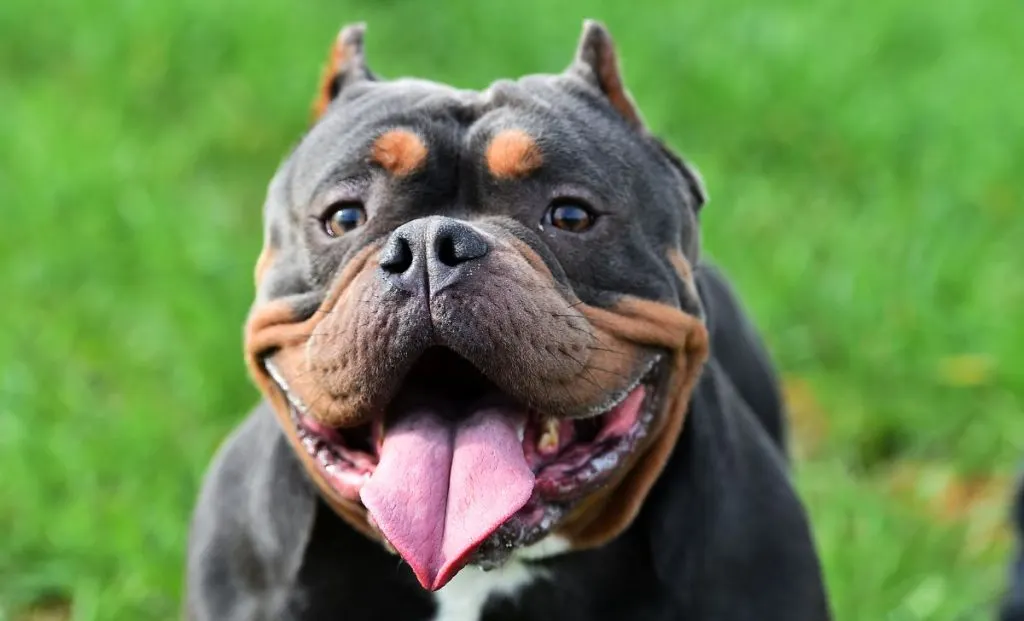
The shedding of each breed greatly depends on its genetics, so it’s important to understand the history of the American Bully breed.
The standard American Bully is one of five Pitbull breeds, right next to American Pitbull Terrier, American Staffordshire Terriers, Staffordshire Bull Terriers, and American Bulldogs.
These dogs are not recognized in the United States, and you cannot register them with the American Kennel Club (AKC). However, this doesn’t mean there are no breed characteristics.
They have short coats that come in numerous colors and patterns, making many people believe they are a hypoallergenic breed. This isn’t the case, though.
Their coat comes with a dense undercoat, which results in a moderate shedding amount.
That’s true – shedding is a natural process for American Bullies, and it’s a part of their daily life. However, the amount of loose hairs shouldn’t be too extensive, and managing the shedding is quite easy.
Regular brushing and combing are crucial here. Not only will it help with keeping the hairs on the brush, but brushing helps get rid of loose or damaged hairs, allowing new hairs to grow.
It also helps dogs’ skin produce essential oils that are important for their skin health.
As their coats are not that challenging to groom, a standard brush should be more than sufficient to keep the shedding amount at bay.
2. Seasonal Shedding
If you’ve noticed the amount of shedding your dog experiences has increased with seasonal changes, this is yet another natural process.
Dog’s hair has several functions. One of them is keeping them warm in the winter, and cool in the summer. For this to happen, however, his coat will have to go through several changes. This will result in dogs changing their coats every spring and late autumn.
The best way to deal with seasonal shedding is to be wary that your Bully’s grooming needs will change during this period. He’ll need more brushing than usual to get rid of all those loose hairs.
Be patient with your pup. It’s not his fault he’s shedding so much – he cannot change this. Fortunately, the extensive shedding should be over in a few weeks at most, and this isn’t something that’ll last forever.
3. Skin Allergies
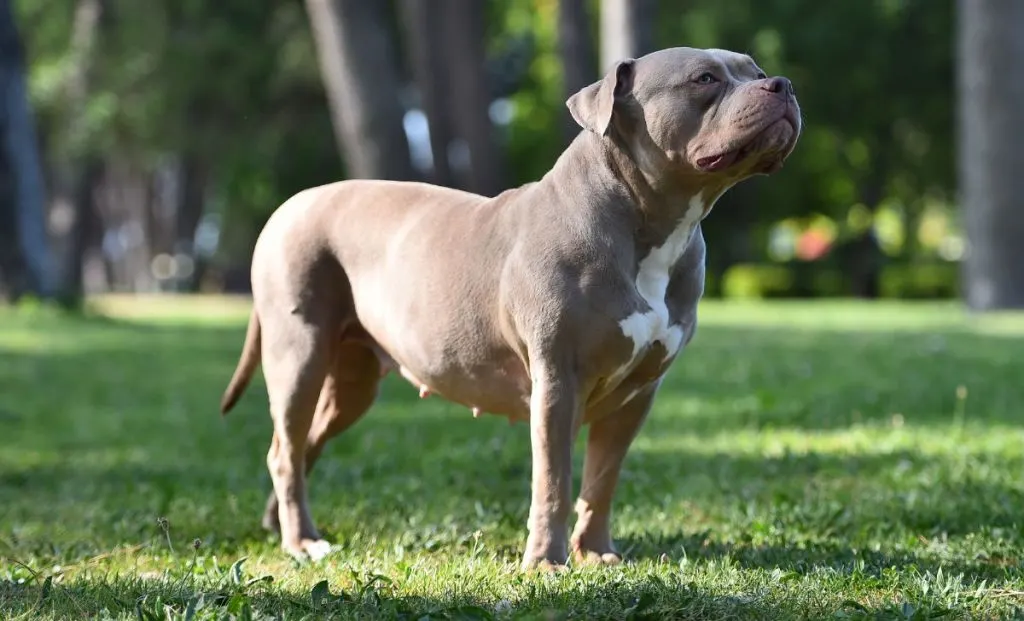
American Bullies are a breed with a lot of skin problems. Many of them can result in hair loss – which is manifested by an increased shedding amount.
While some conditions, such as canine alopecia, are quite obvious due to the bald spots, some are rather mild. In fact, one of the most common causes of excess shedding is some type of skin allergy.
Most skin allergies don’t directly cause hair loss. Instead, they’ll make your Bully scratch too much, which can result in loose hairs.
Some of the warning signs of skin allergies in Bullies include excess scratching, biting their paws or other itchy parts of the body, agitation, and even aggression.
If the hair keeps falling out, this can result in minor bald patches.
The only solution here is to take your pup to the vet who will examine your pup and give you a proper treatment, which will usually be some topical cream.
This is also the only way to rule out many potentially dangerous health problems.
4. Food Allergies
Believe it or not, skin allergies are not the only cause of hair loss. Food allergies can do just that, as well.
On rare occasions, your Bully might experience increased hair loss after eating food his organism can’t handle.
Pay close attention to the timing of the excessive hair loss. Did this begin once you’ve changed your pup’s diet? If the answer is ‘yes,’ maybe it’s time to try switching to another brand of food.
Your Bully should always get the best dog food possible (and this feeding chart can help you make sure you’re not giving too much food to him!).
Make sure the kibble only has high-quality ingredients, and potentially opt for a different protein source, as this and grains are the main causes of allergies.
Look at food labels to see whether the food contains fatty acids, as these can help your pup’s coat grow shiny and healthy.
Lastly, contact your vet about potentially switching to a hydrolyzed diet, at it was proven to be one of the best options for dogs with plenty of food allergies.
5. Age
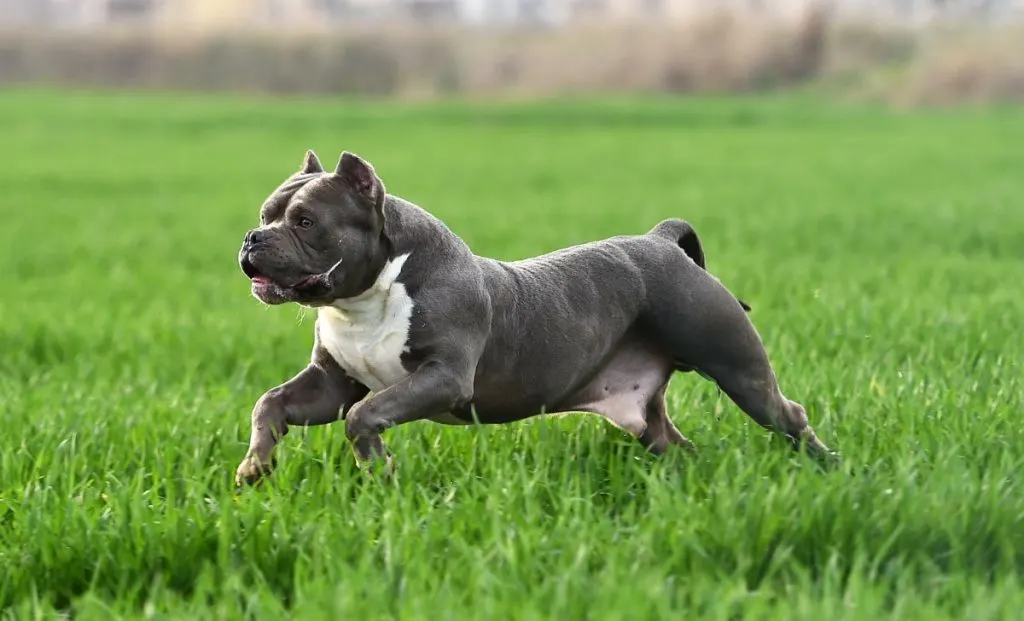
Another important thing to keep in mind is your dog’s age, as it can also be an essential factor in the amount of shedding.
Puppies typically shed more than adult Bullies, as they will change their coat type during puberty. You probably won’t notice a huge change, but this can result in some loose hairs.
Also, senior Bullies are likely to shed more as a standard part of the aging process.
Unfortunately, there isn’t much you can do to prevent this type of shedding. The only thing you can do is to keep on brushing your pup, and maybe include some omega-3 and omega-6 fatty acids in his diet.
6. Environmental Factors
A few environmental factors can also affect the shedding amount and pattern.
Humidity levels, temperature, and exposure to pollutants all influence your dog’s coat and skin health.
Most of these will irritate your Bully’s sensitive skin, resulting in infections and hair loss that leads to shedding.
The only way to provide your pup with any significant help is to try to keep him away from any negative environmental factors.
Make sure he’s wearing a dog vest during cold days, and avoid walking him during the day in mid-summer. Keep him away from any air pollutants, and generally try to encourage a healthy lifestyle.
All of this will make sure your pooch’s coat is nice and healthy no matter the season.
7. Hormonal Changes
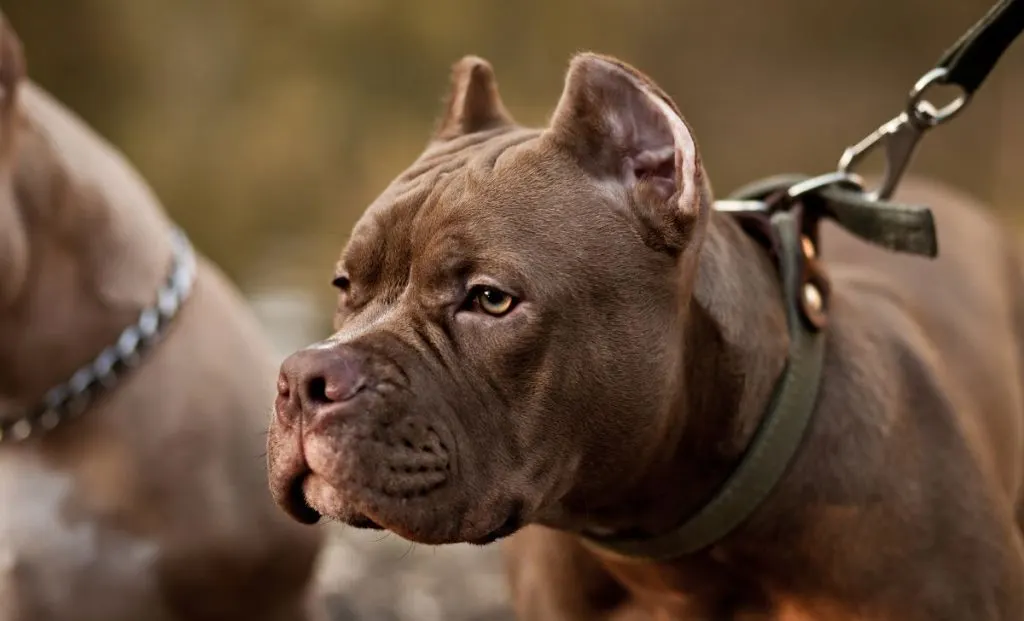
Hormonal fluctuations, such as those related to pregnancy, lactation, or neutering/spaying, can influence shedding patterns.
This is also one of the reasons why puppies experience more shedding during ‘puberty’; their hormone levels are changing. As a result, some of their hair is falling off.
It’s impossible to do anything regarding these causes. Luckily for you, all of this is normal and not long-lasting. Try to stay patient for a little while, and the shedding amount is likely to reduce.
Certain health conditions can also lead to hormonal imbalances. This includes thyroid problems, something Bullies are generally prone to.
Another reason might be Cushing’s disease, which causes adrenal glands to overproduce certain types of hormones, most notably cortisol.
If you know your adult dog isn’t expecting puppies, and the fixing procedure was a long time ago, take your pup to the vet. Only a professional can assess the situation properly and find the right treatment.
8. Stress and Anxiety
Have you done something that has changed your dog’s lifestyle, even for just a little bit? Maybe you’ve moved to a new home or have gotten a new place. Even a new vacuum cleaner can be extremely scary for a young dog!
Any change dogs experience typically causes anxiety or stress. Just as is the case with humans, this can result in some hair loss.
There is a biological reason behind this.
During anxiety, canine bodies produce the stress hormone cortisol. Excess cortisol has many adverse effects, such as weight gain and fatigue. It can also lead to hair loss.
Cortisol can also lead to many long-lasting health issues, such as irritable bowel syndrome, diabetes, and even kidney damage. In fact, this can lead to a condition called pseudo-Cushing’s disease, as it results in similar symptoms.
There isn’t a universal way to help your dog deal with stress. Sometimes, the best way is to remove the stressor out of the dog’s sight (and smell). However, this isn’t always possible.
For example, if you’ve moved, you cannot simply make things the same as they were before.
Give your dog a lot of love during stressful periods, and let him know you’re next to him.
Maybe even give him some antianxiety medication or sprays. Sure, some people would argue about their quality and potential negative effects, but anything is better than risking your dog’s life, right?
9. Health Problems
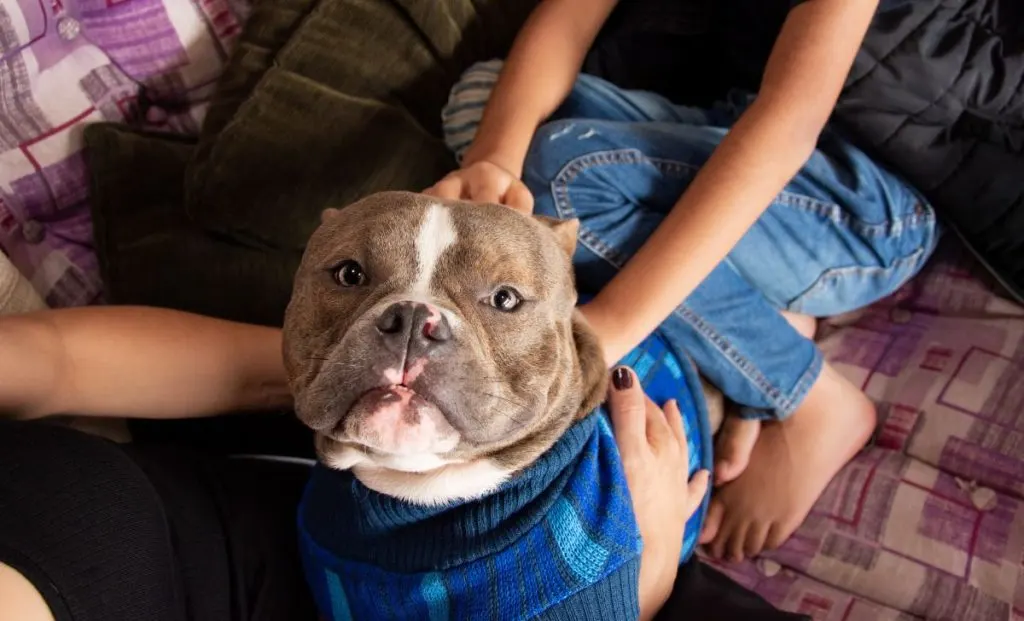
While some common health problems, such as hip dysplasia, won’t increase the shedding amount, others can lead to just that.
I’ve already mentioned Cushing’s disease. Pressure sores are another common health issue caused by laying in one place for too long or from repeated trauma as a pet lays or sits down. They typically occur on the dog’s hips and elbows.
Parasites and fleas can make your American Bully scratch, further increasing the shedding amount.
When wondering, ‘Why is my American Bully shedding so much?’, it’s important to take him to the vet who can determine the underlying cause and give your pooch a proper treatment.
Sometimes, all your Bully needs is a good parasite control medication. Some more serious conditions typically require extensive medication.
In general, some amount of shedding is normal and quite expected of the American Bully breed. Just because your Bully is leaving some hairs on the couch doesn’t mean he needs any treatment.
However, if you notice the shedding has become more extensive without an apparent reason, this can be concerning.
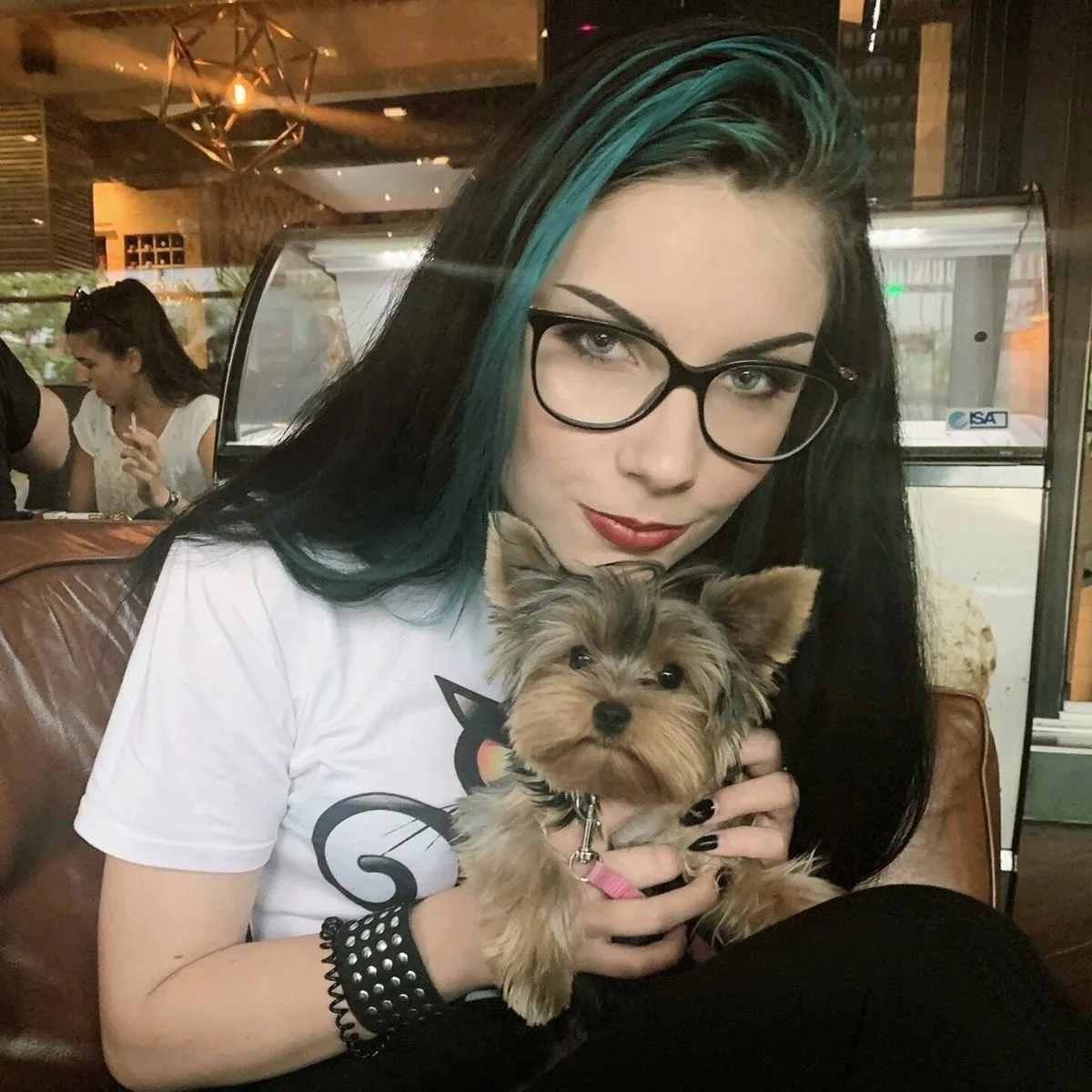
Vanja’s passion for writing started at an early age, which is why she pursued Journalism as her college degree. She can research any topic and find all the information before you bat an eye, which is a great thing for her job but a terrible one for her husband.
Even as a young child, she fell in love with everything fluffy – but dogs have a special place in her heart due to her childhood companion, a Corgie named Archie.
Motivated by her experiences and driven by a desire to give back to her four-legged companions, she spends her free time volunteering at a local dog shelter.
